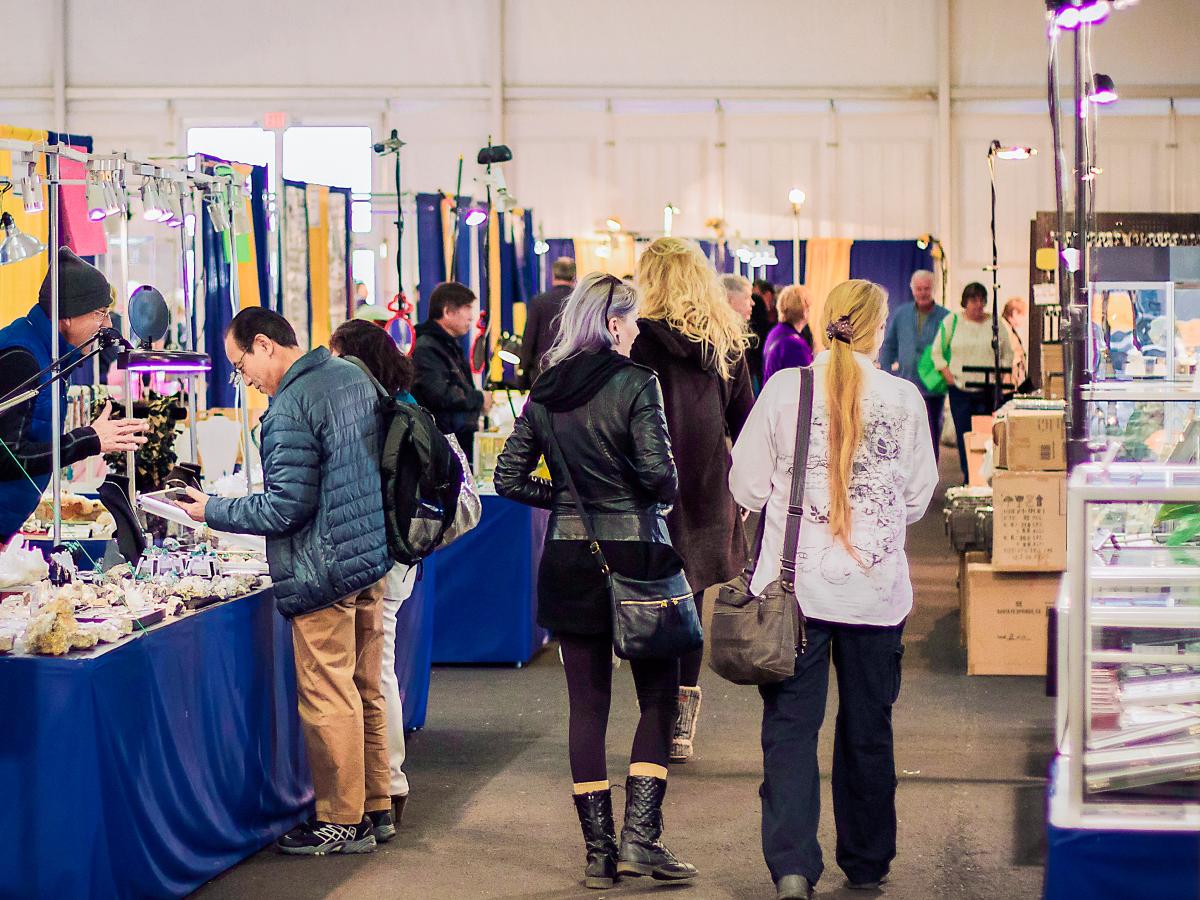Tucson is a year-round capital of gems, minerals, fossils & beads.
Every February, with daytime highs in the perfect mid-60s to low-70s, the Old Pueblo becomes home to biggest gem and mineral show in the U.S.A. — the Tucson Gem, Mineral & Fossil Showcase — with dozens of gem shows throughout the city, drawing hundreds of thousands of collectors, jewelers, manufacturers, dealers and visitors from around the world. Some of these gem shows open again in September for a long weekend after Labor Day during the Tucson Fall Gem Shows.
Until now, the people who followed their curiosity, passions and professions didn’t have one place to explore both the art and science of gemology and mineralogy. With the opening of the expanded University of Arizona Gem & Mineral Museum, visitors, rockhounds, hobbyists and scientists can delve into the fascinating world of precious stones, fossils, beads and more all year long.
Alfie Norville Gem And Mineral Museum
One of the finest gem, mineral, and meteorite collections in the world.
In early 2020, the Alfie Norville Gem And Mineral Museum increased its scope by moving to a larger space in the Historic Pima County Courthouse, next to the new Southern Arizona Heritage and Visitor Center in downtown Tucson. Within its 11,960 square feet exhibits include a rotating display of featured mineral specimens, gemstones, meteorites, and fossils as well as a dedicated Southwest Mining & Minerals Gallery and a Gem Hall that includes a vault for special and rare exhibits. The museum offers abundant opportunities to be inspired and astonished by the wonders of geology.
Tucson Gem and Mineral Show
Tucson's crown jewel event since 1955
Tucson's original "gem show" -- the Tucson Gem and Mineral Show® -- started out in 1955 as a small club show organized by rockhounds at the Tucson Gem & Mineral Society. It was an immediate hit and became an annual February event, eventually settling at Tucson Convention Center where it remains today.
This show is open to the public (admission is charged) and includes a lecture series and vendor displays for both serious and novice collectors, with gems, minerals, crystals, beads and fossils, finished jewelry, lapidary supplies and equipment, and books for rockhounds and hobbyists. Kids love the popular junior education area with hands-on science activities (as much as they love shows with massive dinosaur skeletons). Every year, a mineral or group of minerals is designated as the show's theme mineral.
The first show of its kind
Organizers believe this was the first show of its kind to assemble hobby enthusiasts, curators/professionals, and the public for discovery and discussion. The most important factors in building the show's early reputation were the variety, authenticity, and quality of the specimens on display. This show has enjoyed international stature since the 1970s, partly due to its exhibits, many were drawn from prominent private collections and museums around the world, including Smithsonian Institution and Carnegie Museum of Natural History.
Because of interest generated by the original show, satellite shows have proliferated all over Tucson. Many of these shows cater to the interests -- like beads and meteorites -- of the growing number of people coming to town. Together, the original show and the satellite shows make up the Tucson Gem, Mineral & Fossil Showcase -- one of the largest and most popular events in the international gem and mineral world, attracting an estimated 65,000 people to Tucson in a two-week period every February. This crowd fills hotel and resort rooms, restaurants, rental cars and airline seats many months in advance. The Tucson Gem & Mineral Society is a nonprofit, educational organization promoting interest in minerals, gems, jewelry, lapidary, and earth sciences hold general meetings, lectures, educational classes, field trips, and micro-mount classes. More information about the organization is on tgms.org/show.



